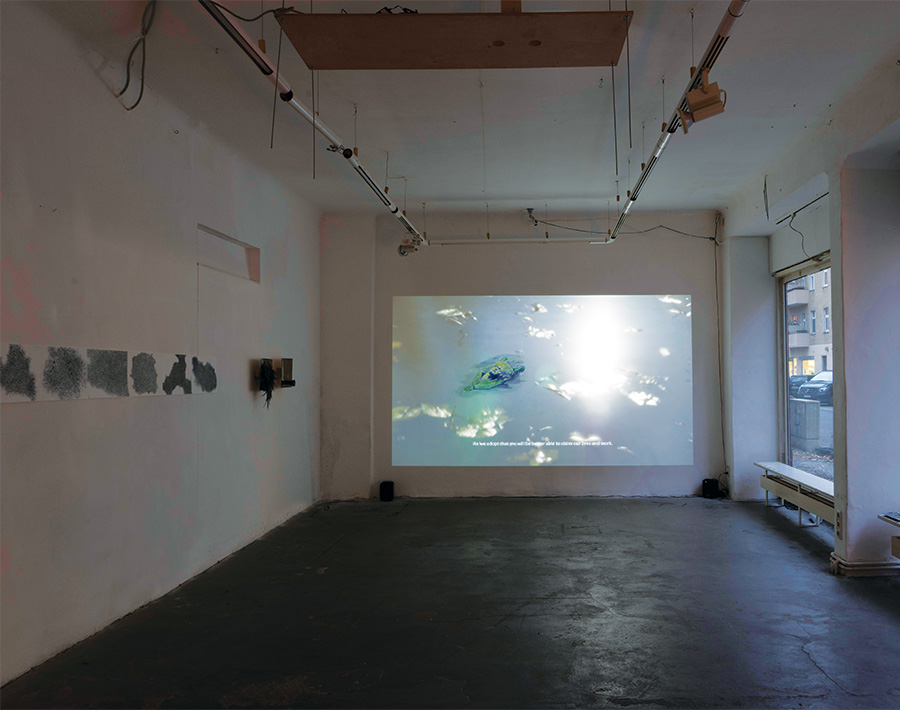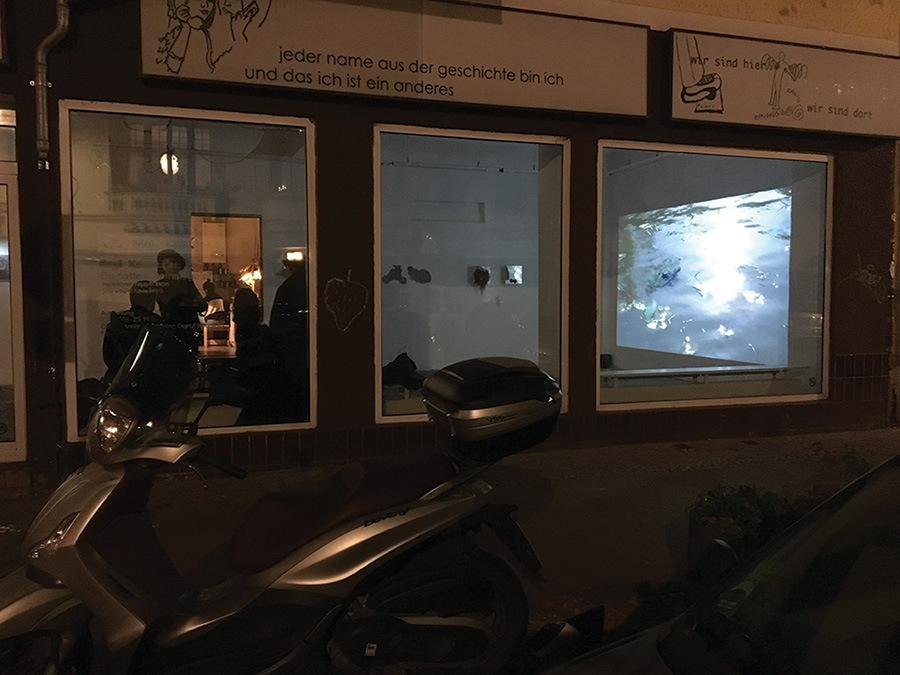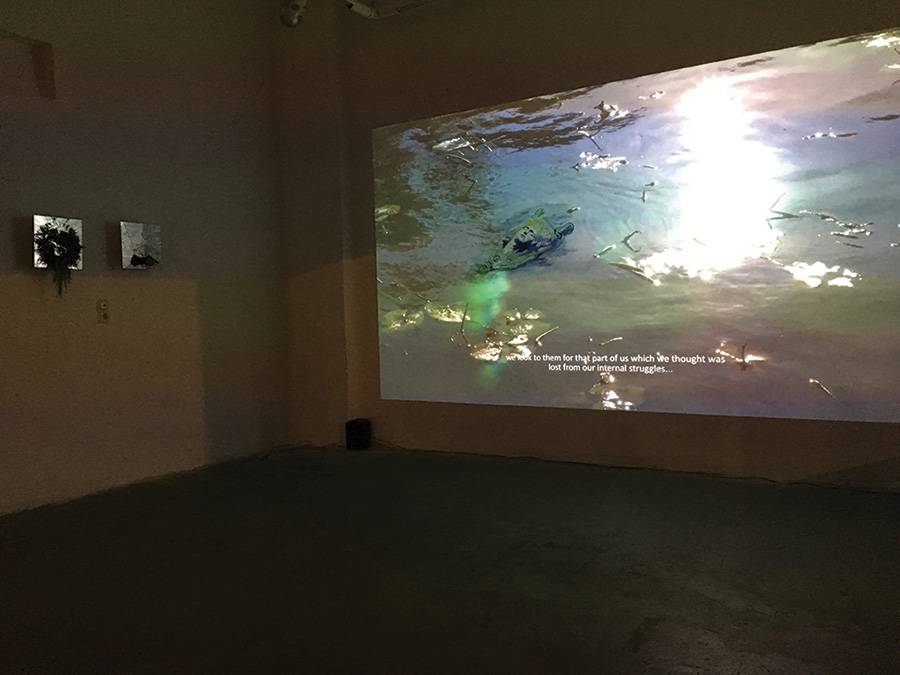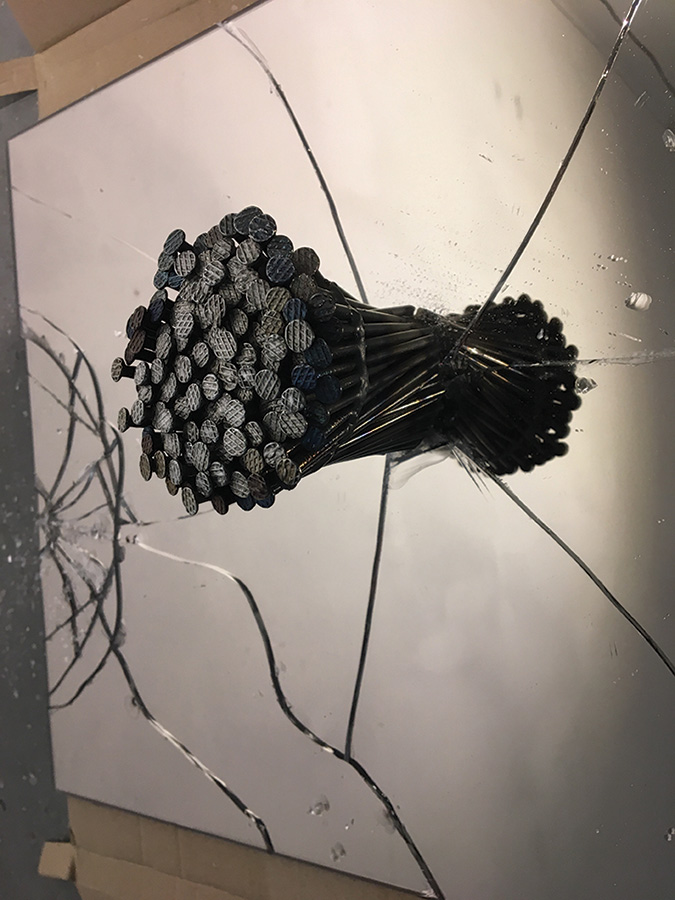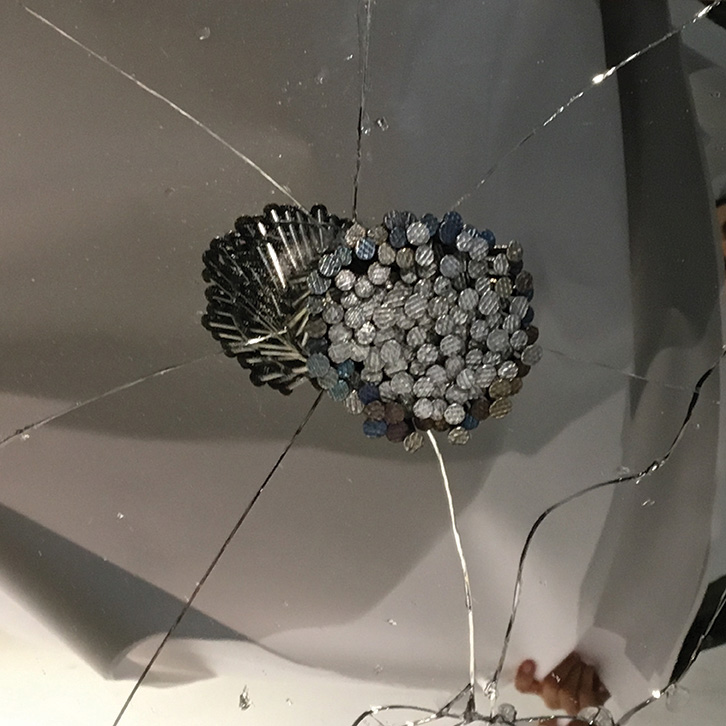Ezgi Kılınçaslan – “You would have lived”
Multimedia Installation
Exhibition Opening: 02.11.2018 at 7pm
Exhibition Period: 02.11. – 25.11.2018
“We were like you,” they say. “You won’t get the answer to any question. The thing that is real is the longing within you, don’t try to extinguish that.”
Neither past nor future, neither death nor life…
Staying on in-between every once in a while, neither back, nor forth but always longing for the other…
Orpheus was the first living soul, who had gone to the realm of the dead and returned.
When he had lost his lover Eurydice, his lament was so sincere that Hades took pity on him and gave him another chance based on one condition. He had to be patient; he could not look at his lover’s face before both spirits had emerged from the underworld. Orpheus accepted this condition, but he couldn’t restrain himself. The moment he passed the threshold, he looked back and that was when he lost Eurydice once again and forever.
Orpheus’s drama did not end there. The void of his lost got deeper and kept pulling him in. What is left after death are the memories of the past with a deep void. The flowing memories in this emptiness are the feelings that could not even objectified. Past Memories is not real and not unreal. The images that emerged from the past, are the reflections of that which no longer exist .
The memory that is recollected is an image, what is remembered is a reflection of that image. Just like the form falling on the water as a reflection, a reflection that cannot be held. When the water ripples, the image becomes blurry it is felt but it cannot be discerned.
Ezgi Kılınçaslan shares with viewers her thoughts and emotions on the states of being in-between through her exhibi-tion “You would have lived”, part of Situational Dictionary:NOW.
“You would have lived” is based on a video by the artist. She met Elizabeth in Tripoli in 2008 and they grew very close, becoming almost family. Through their shared language, Elizabeth told Kılınçaslan her story and Kılınçaslan was very impressed by her colorful, enchanting personality. Elizabeth escaped from the genocide with her family when she was just a child, coming to Lebanon from Adana. She was longing for Adana and wanted to see the city that she considered to be her homeland. This became the basis for the artist’s project to travel to Turkey in 2011, as part of the work “Grandmothers.”
Elizabeth was barbarically killed right before the project was realized; the trip took place in her absence.
The artist focused on her oral history project on the Armenian genocide, which she had started off with Elizabeth. She interviewed many people from different countries, but she always felt something was incomplete; she talks about the feeling of the void created by “witnessing a testimony.” A witness is never the subject; being the subject of the incident means to experience the consequence of the incident, the death. As such, every witness is a deficient, incomplete subject. The artist is a witness to being a witness in her oral history project and this lack is always felt. Taking this feeling as a point of departure, the state of being in-between, being on the threshold are her subjects.
Being in between is actually not belonging anywhere, just like the mouse that is imprinted on the asphalt, barely a trace. That mouse is neither there nor not there. The tangible form of not being anywhere, not being able to leave, of not being able to stay behind.
That trace on the asphalt corresponds to the traces of memories that can be recollected. Memories also transform into feeling that fail to become tangible, that are not capable of becoming objects. These
feelings that cannot be objects are reflected in the artist’s drawings and her experimental works with
nails and mirrors. The mirror, which is a two-way
medium, is a strong image to represent the notion of the threshold. The subject in front of the mirror sees themselves within the mirror and inevitably, the idea of transcending through the mirror emerges. While the subject is on this side, their image is on the other side.
Kılınçaslan’s mirrors are broken up by nails who
want to move on to the other side. The mirror, which does not allow anything to pass to the other side, is fragmented by the resisting subject. The mirror couldn’t stand the resistance. However, the nature of the nail is to pass to the other side. While a part of the nail remain here in existence, the other part pass on to the other side and become invisible. Could the nails be both here and there?
Being in the liminality is an odd feeling, a symptom of change, the uncertainty of not knowing what to expect. To be accepted or to be excluded.
Reaching the threshold is a sign of change, the perception changes when the threshold is transcended. When the pain threshold is crossed, the pain becomes dulled. As soon as the threshold is passed, the pleasure transforms to pain. It’s always a state of lack.
In his book “Five Cities”, Ahmet Hamdi Tanpınar speaks about this emptiness that a person feels within, between the past and the future. The hole left by lost, what is remained in the past, is also a void that draws the rest into itself.
“No, it is certain that we do not love these old things for themselves. What that pulls us towards them is the emptiness they leave behind. Whether or not you can see its imprint, we look to them for that part of us which we thought was lost from our internal
struggles..”
While the artist draws attention to the void that tempts Tanpınar on the one wall , on the counter one the Romanian-German poet Paul Celan responds to Tanpınar with “ Dump autumn smells”. As Tanpınar articulates the unresistable void, he pulled into,
Celan replies to him with a completely unfamiliar state of being lost that belongs to no one. Neither real nor unreal, neither a being nor a nonbeing, just a feeling that is not able to become tangible.“… almost you would lived.” (Paul Celan)
Ezgi Kılınçaslan’s “ You would have lived” is a
poetic aesthetic expression on liminality, being stuck between longing for the past and the ambiguity of the future.
Ahmet Hamdi Tanpınar, Beş Şehir [Five Cities], Dergah Yayınları, 2016. atriz Sarlo, Geçmiş Zaman [Past Times], Metis Yayınları, İst., 2012.
Paul Celan, Neredeyse yaşayacaktın [You were almost going to live], Turkish translation: Oruç Aruoba.
Participants:
Ezgi Kılınçaslan
Project Type:
Exhibition
Location:
Berlin
Year:
2018
Project Category:
Transdisciplinary Experimentation





